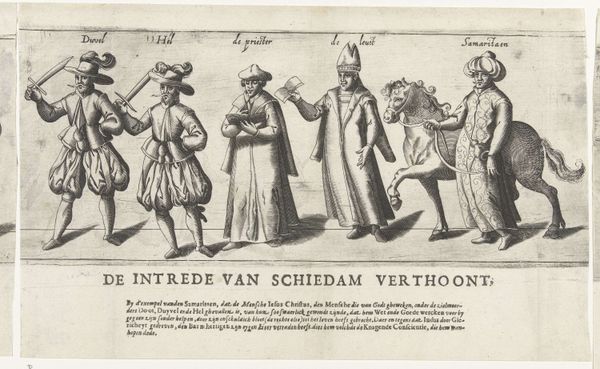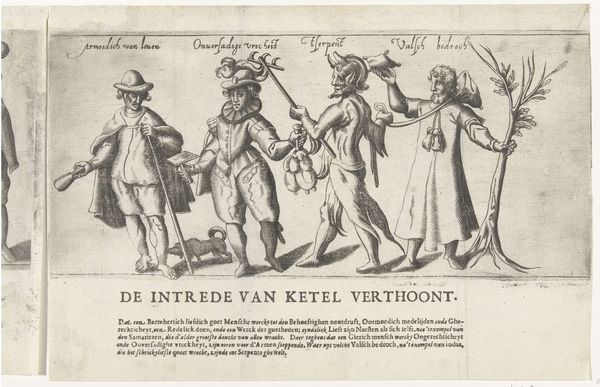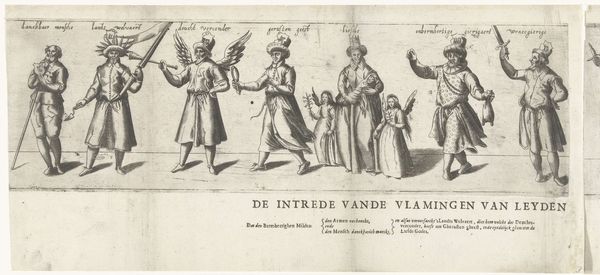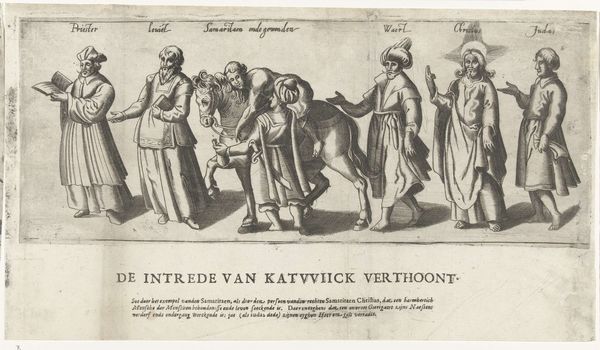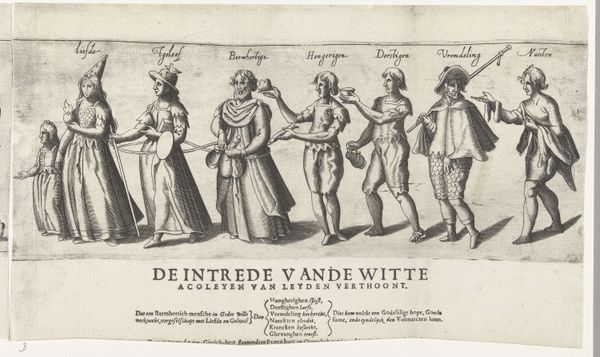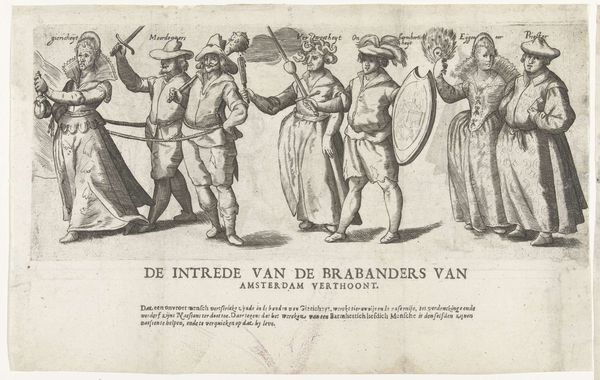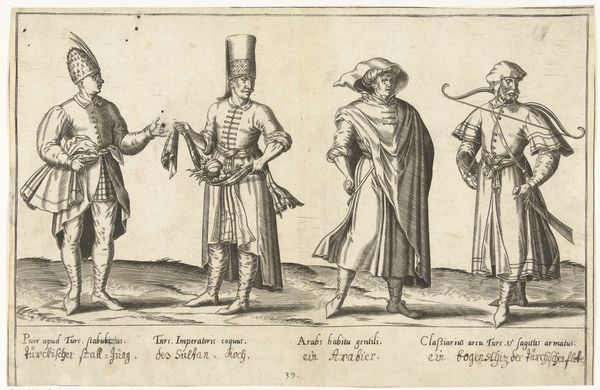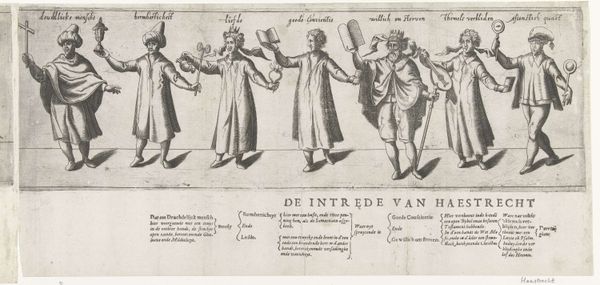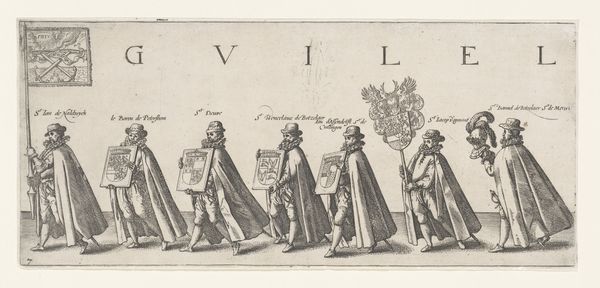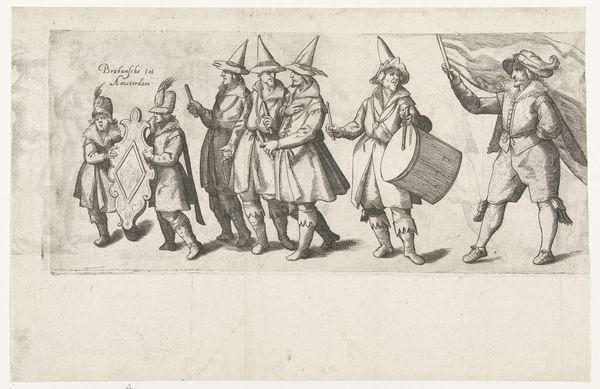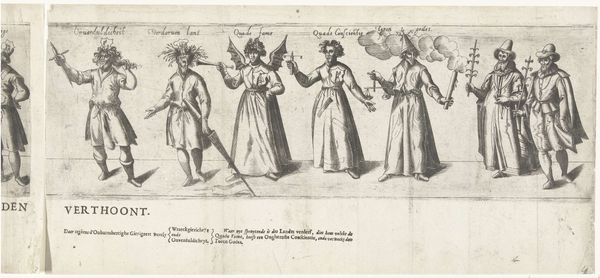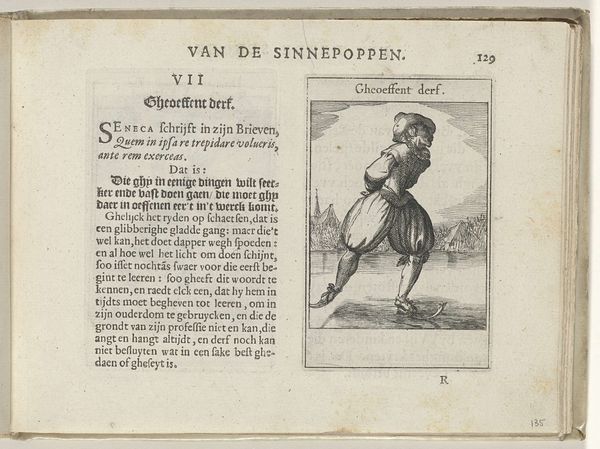
Optocht door de rederijkerskamer De Lelijkens onder de Doornen uit Noordwijk (tweede deel), 1607 1607
0:00
0:00
print, engraving
#
narrative-art
#
baroque
# print
#
figuration
#
genre-painting
#
engraving
Dimensions: height 202 mm, width 340 mm
Copyright: Rijks Museum: Open Domain
Curator: My first impression is how much detail is packed into this monochrome print! It feels like a small world teeming with characters. Editor: That's a perfect way to describe it. What we're seeing is a print called "Procession by the Chamber of Rhetoric De Lelykens onder de Doornen from Noordwijk, part two," created in 1607 by an anonymous artist. It's an engraving housed here at the Rijksmuseum. Curator: Engraving is such a demanding technique, isn’t it? The level of control needed to carve those fine lines into a metal plate, the way light plays across the printed surface, it’s all part of its appeal for me. You really see the hand of the maker. Editor: Absolutely, and that process gives us access into the cultural world it came from. These aren’t just random figures. The inscription refers to a Chamber of Rhetoric, a dramatic society, suggesting this print commemorates a theatrical performance. Chambers of Rhetoric played an important role in public life, staging plays for civic events. Curator: And you can feel that public role reflected in the deliberate costuming, look at the fabrics and garments each person is adorned with. This Midas character, especially. You get a sense of social standing even through the material properties rendered in print. Editor: Right, the attire, coupled with those identifying names – Judas, Ananias, Saphira, Midas – it's like a morality play condensed into a single image. A series of well-known allegorical figures that people would have easily recognised back then. Each represents some sort of moral lesson or story. Curator: It makes me wonder about the paper it's printed on as well, the supply chains, distribution networks... that image would have been widely reproduced. Editor: The printing and distribution of these types of images, particularly of allegorical performances, speaks volumes about the cultural and political landscape of the time. Prints such as these help construct the narrative of Northern identity in the 17th Century. Curator: For me, seeing these different hands from history – the artist, the rhetoricians, even the printer, all collaborating and leaving this imprint on materials is fascinating. Editor: I agree. Examining prints like this offers insights into social structures of the era. I would add that prints like this give us an entryway into 17th century public performance, too, allowing a richer understanding of the lives, thoughts, and cultural products of early modern Northern Europeans.
Comments
No comments
Be the first to comment and join the conversation on the ultimate creative platform.
